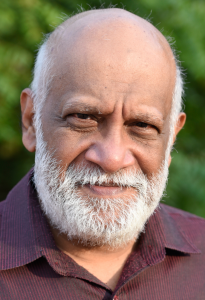Anthony Nayagan’s Perspective on IIT’s Approach to “Out-of-the-Box” Thinking in Mathematics
Introduction:
In the ever-evolving landscape of education, the pursuit of “out-of-the-box” thinking has become a universal endeavor, with universities globally offering courses and seminars dedicated to fostering creativity and unconventional problem-solving. At the forefront of this movement, the Indian Institutes of Technology (IIT) have adopted a distinctive strategy, seeking to instill this innovative mindset through a Mathematics course that highlights the role of logic in real-world applications. However, a closer examination, through the lens of Anthony Nayagan, reveals a paradox that challenges the fundamental nature of “out-of-the-box” thinking.

The Essence of “Out-of-the-Box” Thinking:
At its essence, “out-of-the-box” thinking is often seen as a departure from conventional, systematic approaches, urging a leap into the abstract and unconventional. This philosophy encourages creativity that transcends traditional step-by-step logic and champions solutions that may not be immediately apparent. IIT’s endeavor seems to align with this philosophy, aiming to broaden students’ perspectives on mathematics and its applications within the technological realm.

Unveiling the Contradiction:
Anthony Nayagan posits a thought-provoking contradiction, questioning whether “out-of-the-box” thinking can genuinely be classified as a form of thinking. From his perspective, this approach surpasses the logical norms of ordered thinking and enters the realm of pure observation. According to Nayagan, intellectualizing what is observed compromises the very essence of the observation. In essence, “out-of-the-box” thinking may be more about experiencing the present moment without interference from cognitive processes.
Preserving the Purity of Observation:
Nayagan asserts that the observation of abstract phenomena should remain untarnished by immediate intellectualization. Human intelligence, in his view, should come into play only after the observation is complete, serving as a tool to synthesize observations and formulate an implementation plan. He emphasizes the importance of preventing human intelligence from interfering with the initial act of observation.
Transcendental Meditation as a Path:
To strike a delicate balance between observation and intellectualization, Nayagan advocates for practices such as transcendental meditation. This form of meditation surpasses mindfulness, delving into the realm of mindlessness, where pure observation can be cultivated. Through mindlessness, individuals may cultivate the discipline to observe without immediately engaging in intellectual processes, thereby preserving the purity of insights.
Conclusion:
In Anthony Nayagan’s nuanced perspective, the IIT’s initiative to promote “out-of-the-box” thinking through a Mathematics course initiates a compelling discourse on the very nature of creativity and problem-solving. Nayagan’s contradiction suggests that authentic innovation may not solely reside in thinking but in observing without interference. Regardless of individual perspectives, Nayagan’s viewpoint adds a layer of complexity to the ongoing conversation about nurturing creativity in education. As we explore the boundaries of “out-of-the-box” thinking, Nayagan’s assertion prompts us to consider the delicate equilibrium between intellectualization and the purity of observation, acknowledging that innovation may manifest in unexpected and paradoxical ways.

